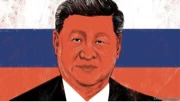(Thread IKs:
fart simpson)
|
what was ever the point of only requiring testing on unvaccinated people? the vaccines dont stop people from spreading it around really at all and we've known this since pretty early on
|
|
|
|

|
| # ? May 28, 2024 02:07 |
|
it's so you can blame unvaccinated and unmasked people
|
|
|
|
fart simpson posted:what was ever the point of only requiring testing on unvaccinated people? the vaccines dont stop people from spreading it around really at all and we've known this since pretty early on Yeah, it is just probably incentive thing (its own issue), and also they were also pretty coy about the ability of the vaccine to slow down the spread of the disease. Let's be honest, most governments didn't help the situation by not communicating both the risks and limits of the vaccine, it is there to mitigate symptoms but that is generally it. Also, to be honest, testing was always pretty spotty as well, the PRC tried to solve it with a battery of tests but I am sure some cases still made their way through. The only real solution was really to shut down almost all international travel in mid-January 2020 then push tracing and progressive lockdowns where there was even a hint of an infection. The only shutdowns that happened around that era were from China and long after the covid had escaped.
|
|
|
|
MR Online: A look back on three years of China’s anti-Covid-19 fightquote:... I will pause the quote here to take note that the apartment fire in Xinjiang that was allegedly the proximate moment that sparked a number of anti-COVID-lockdown protests was on November 25, 2022, some two weeks after the 20 measures announcement cited by the author of this piece. the citation for the November 11 announcement links to this article from the Global Times quote:... Another pause here to point out that Japan is experiencing a rather severe surge that may have made these assumptions outdated by now. quote:Although China has now surpassed the life expectancy of the U.S., it has relatively fewer people 75 years and older than the U.S. (46 percent fewer as a percentage of the total population for each country). Omicron has had the impact that a massive 69 percent of all Covid-19 deaths in the U.S. in September 2022 were from this age group. The demographic difference in this age group, taken as a stand-alone factor, would imply an over 30 percent reduction in likely death rates for China. gradenko_2000 has issued a correction as of 08:37 on Jan 3, 2023 |
|
|
|
sonatinas posted:My experience in this is anecdotal and I'll try to exercise not too much conjecture. When my Myanmar customer started asked about all this documentation I realized that their Indian supplier had all of the container loading and testing done at a 3rd party warehouse where then this 3rd party can verify everything such as container being loaded accordingly, fumigation of container, quality tests done on the product to make sure it is up to spec, etc. In turn the buyer would have a bunch of certificates indicating that what they bought is what it is. I usually see this when buyers don't trust ordering from certain suppliers or whole countries since some of this stuff is directed at the buyer's countries import regulation authority. what? The NREGA public works program created government granaries in otherwise remote areas and cycled money into the local acconomie? Sounds like corruption to me!
|
|
|
|
While I understand the US farming industry does its own inspection because it's a large industrial operation (exact opposite of India), keep in mind the US government has a habit of outsourcing the government oversight function to the industrial themselves. See, MPAA rating; Boeing 737max
|
|
|
|
quote:Even two doses of so-called advanced Western mRNA vaccines like Pfizer/BioNTech’s vaccine or Moderna’s similar mRNA vaccine provide only about 30 percent protection against symptomatic infection from Omicron for about four months. Only tangentially related to your post, but this now widespread idea that 'we have better mRNA vaccines, and dumb Chinese people refusing to accept them out of stubbornness will cause more of them to die than us' is yet another thing that makes no sense compared to what Western governments have been saying about their own policy. At least here non-mRNA Astra and Novavax vaccines were widely used and the government took great pains to communicate that you should not worry about which ones you got and you would be considered fully vaccinated regardless of whether you had an mRNA vaccine or not. Not surprisingly nobody ever comments on this now we have prioritised making GBS threads on Chinese covid policy over evaluating our own.
|
|
|
|
gradenko_2000 posted:MR Online: A look back on three years of China’s anti-Covid-19 fight appreciate these refs
|
|
|
|
ModernMajorGeneral posted:Only tangentially related to your post, but this now widespread idea that 'we have better mRNA vaccines, and dumb Chinese people refusing to accept them out of stubbornness will cause more of them to die than us' is yet another thing that makes no sense compared to what Western governments have been saying about their own policy. Probably because those pushing that policy were more concerned about harming Chinese vaccine distribution than affecting how their own vaccines were distributed which should tell you a lot about them. To be clear, the point of the vaccines was to clear people generally out of hospitals and to reduce the severity of the infection but they had a minimal effect on people being non-symptomatic as a whole since even a very mild infection can be seriously contagious.
|
|
|
|
Covid policy in Western countries that did things was 100% about ensuring their health care systems wouldn't get overtaxed to the point of collapse in the short term. With the exceptions of New Zealand and Australia for as long as they lasted. What the long term effects of sick and burned out staff will be is yet to be determined. In NL at least it looks like a slowmo collapse of the health care system to me.
|
|
|
|
ModernMajorGeneral posted:Only tangentially related to your post, but this now widespread idea that 'we have better mRNA vaccines, and dumb Chinese people refusing to accept them out of stubbornness will cause more of them to die than us' is yet another thing that makes no sense compared to what Western governments have been saying about their own policy. no, you're absolutely right - Western countries were willing to count AstraZeneca and Johnson & Johnson in their vaccination numbers, so for them to say "China will have a worse time because they didn't specifically have mRNA vaccines" is incredibly disingenuous hell, the UK even had a policy in 2021 by which a Pfizer shot administered to you in India didn't count for their vaccine pass rules, even if it's chemically the same loving shot, just because it was going to let people from India into the country it's pure racism
|
|
|
|
https://twitter.com/pdchina/status/1610182529046446080?s=46&t=VwY5u8oS4NCNwtcwMWtc4A
|
|
|
gradenko_2000 posted:hell, the UK even had a policy in 2021 by which a Pfizer shot administered to you in India didn't count for their vaccine pass rules, even if it's chemically the same loving shot, just because it was going to let people from India into the country it was definitely partly racism, but the justification for this wasn't vaccine quality – it was about the reliability of official vaccination records.
|
|
|
|
|
I remember seeing a study showed India licensed and produced AZ vaccine had lower efficacy than the UK produced ones. I don't know if that was due to lower QC of the Indian vaccines or due to fake vaccine records. In any case the policy of not counting Indian AZ vaccine could still be motivated by racism depends on when the study came out. Also the owner of major Indian vaccine company fled to UK in May 21, alot of shady business happened over there. Sounds like the backdrop of a blackmail heist movie.
|
|
|
|
I received two shots of the Indian made AZ vaccine, so this is something I'm interesting in hearing more about. I did get Covid, felt lovely for about a day and a half, and then it stopped causing any problems. However, a few weeks later I started getting asthma-like symptoms, having several hours a day during which I had a lot of trouble breathing, frequent migraines, and just general exhaustion being constant. It lasted for almost a year before it stopped (Or just went to the regular old schedule in case of migraines). Thankfully, it wasn't permanent lung damage as I originally feared, but it sucked pretty bad while it lasted.
|
|
|
|
I just covered all my bases by getting Sinovac first, then Moderna for a booster, then AZ for a second booster
|
|
|
|
stephenthinkpad posted:I remember seeing a study showed India licensed and produced AZ vaccine had lower efficacy than the UK produced ones. I don't know if that was due to lower QC of the Indian vaccines or due to fake vaccine records. In any case the policy of not counting Indian AZ vaccine could still be motivated by racism depends on when the study came out. oh, as an aside one of modi's cronies muscled in on the vaccine business after the SRI got harassed lol.
|
|
|
|
exmarx posted:it was definitely partly racism, but the justification for this wasn't vaccine quality – it was about the reliability of official vaccination records. the purpose of a system is what it does, which in this case was ensuring that not too many swarthy people get to racism island
|
|
|
|
This a clip of Michael Auslin explained that Washington barely have any China experts and just moved the old Soviet experts on China. https://www.youtube.com/watch?v=uxCT9xcbHvE&t=1532s This is how idiots like Elizabeth Economy ended up writing China books.
|
|
|
|
stephenthinkpad posted:Elizabeth Economy lol come on now
|
|
|
|
Elizabeth Economy is a senior fellow for China studies at the Council on Foreign Relations and a senior fellow at Stanford University's Hoover Institution. She directs a transatlantic dialogue as the Richard C Holbrooke fellow at the American Academy in Berlin. Dr. Economy is an acclaimed author and expert on Chinese domestic and foreign policy.
|
|
|
|
stephenthinkpad posted:Elizabeth Economy ha, that's a funny joke name for the... oh my god she's real
|
|
|
|
fart simpson posted:Elizabeth Economy is a senior fellow for China studies at the Council on Foreign Relations and a senior fellow at Stanford University's Hoover Institution. She directs a transatlantic dialogue as the Richard C Holbrooke fellow at the American Academy in Berlin. Dr. Economy is an acclaimed author and expert on Chinese domestic and foreign policy. rofl wonder if she knows Liz Bourgeois, U.S. Department of the Treasury (June 2021-), Senior Spokesperson, Recovery Programs quote:U.S. Department of the Treasury (June 2021-)
|
|
|
|
fart simpson posted:Elizabeth Economy is a senior fellow for China studies at the Council on Foreign Relations and a senior fellow at Stanford University's Hoover Institution. She directs a transatlantic dialogue as the Richard C Holbrooke fellow at the American Academy in Berlin. Dr. Economy is an acclaimed author and expert on Chinese domestic and foreign policy. can she speak chinese?
|
|
|
|
mawarannahr posted:rofl wonder if she knows Liz Bourgeois, U.S. Department of the Treasury (June 2021-), Senior Spokesperson, Recovery Programs Yah, they're married.
|
|
|
|
Orange Devil posted:Yah, they're married. Aug 21, 1994 — Elizabeth Charissa Economy, an associate fellow at the Council on Foreign Relations, was married yesterday to David Michael Wah, a vice president in the investment banking division of CS First Boston. Both work in New York. The Rev. Demetri Kantzavelos performed the ceremony at the Annunciation Greek Orthodox Cathedral in Chicago.
|
|
|
|
quote:Despite the economic pressures, rather than “crippling” China’s economy, the country’s GDP grew nearly four times faster than the U.S. and five times compared to the EU, from the start of the pandemic to Q3 of 2022. this doesn't get talked about enough and it's why I’m hesitant to buy economic factors as the primary reason behind abandoning covid/dynamic zero Hedenius posted:https://twitter.com/pdchina/status/1610182529046446080?s=46&t=VwY5u8oS4NCNwtcwMWtc4A 👀
|
|
|
|
mila kunis posted:can she speak chinese? You are going to lose a lot of followers.
|
|
|
|
mila kunis posted:can she speak chinese? idk, i dont see any evidence for it. none of her bios mention anything that suggests it and her twitter is just full of crap like https://twitter.com/LizEconomy/status/1445346443951235073
|
|
|
|
indigi posted:this doesn't get talked about enough and it's why I’m hesitant to buy economic factors as the primary reason behind abandoning covid/dynamic zero the chinese covid quarantine system is an enormous political feat, but i've been saying since march that geographically based quarantine could only remain viable as a first line of defense while covid outbreaks were largely contained to the most developed areas. once it escaped those, that was game over. on the one hand i wish they had gone for developing more thorough defense in depth against respiratory infections, but i guess the CPC felt that wasn't the best use of resources, and who am I to argue.
|
|
|
|
fart simpson posted:Elizabeth Economy is a senior fellow for China studies at the Council on Foreign Relations and a senior fellow at Stanford University's Hoover Institution. She directs a transatlantic dialogue as the Richard C Holbrooke fellow at the American Academy in Berlin. Dr. Economy is an acclaimed author and expert on Chinese domestic and foreign policy. mawarannahr posted:rofl wonder if she knows Liz Bourgeois, U.S. Department of the Treasury (June 2021-), Senior Spokesperson, Recovery Programs Ok the sim needs a bit of tuning I think. Bit goofy.
|
|
|
|
fart simpson posted:idk, i dont see any evidence for it. none of her bios mention anything that suggests it and her twitter is just full of crap like intellectual poo poo https://twitter.com/lizeconomy/status/1325466260268834817?s=46 https://twitter.com/lizeconomy/status/925358202656559104?s=46 mawarannahr has issued a correction as of 17:33 on Jan 3, 2023 |
|
|
|
The guy who came up with and advocated for the global economic sanctions system was also named Bourgeois.
|
|
|
|
Cup Runneth Over posted:Ok the sim needs a bit of tuning I think. Bit goofy. It's how the programmers wink at us. Like those hidden naked statues in Disney animation movies.
|
|
|
|
Hi I'm Dr. Economy. Lmfao
|
|
|
|
kojima rear end names
|
|
|
|
Cuttlefush posted:kojima rear end names
|
|
|
|
lol
|
|
|
|
Cuttlefush posted:kojima rear end names Sam, Economy-man here
|
|
|
|

|
| # ? May 28, 2024 02:07 |
|
Cuttlefush posted:kojima rear end names
|
|
|







































